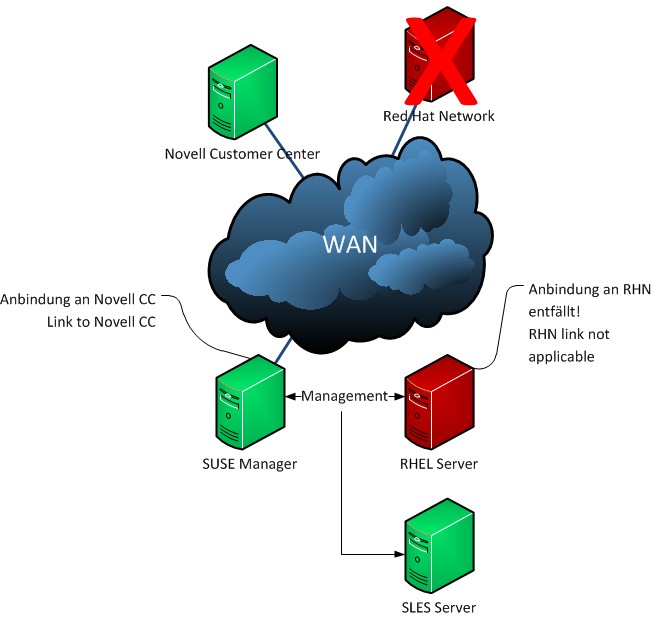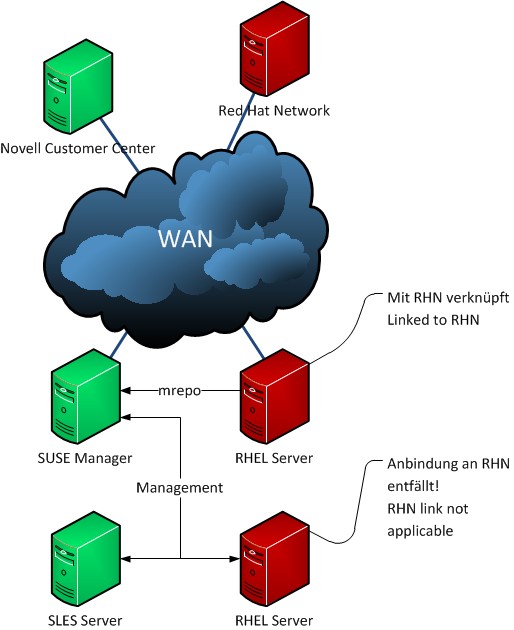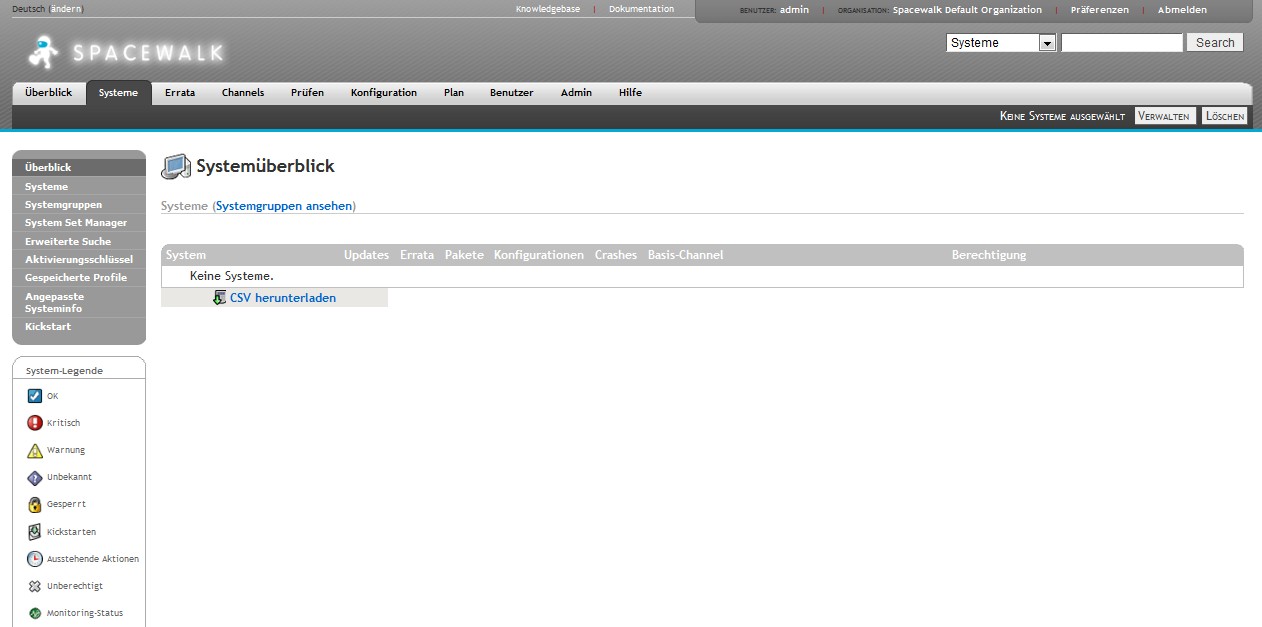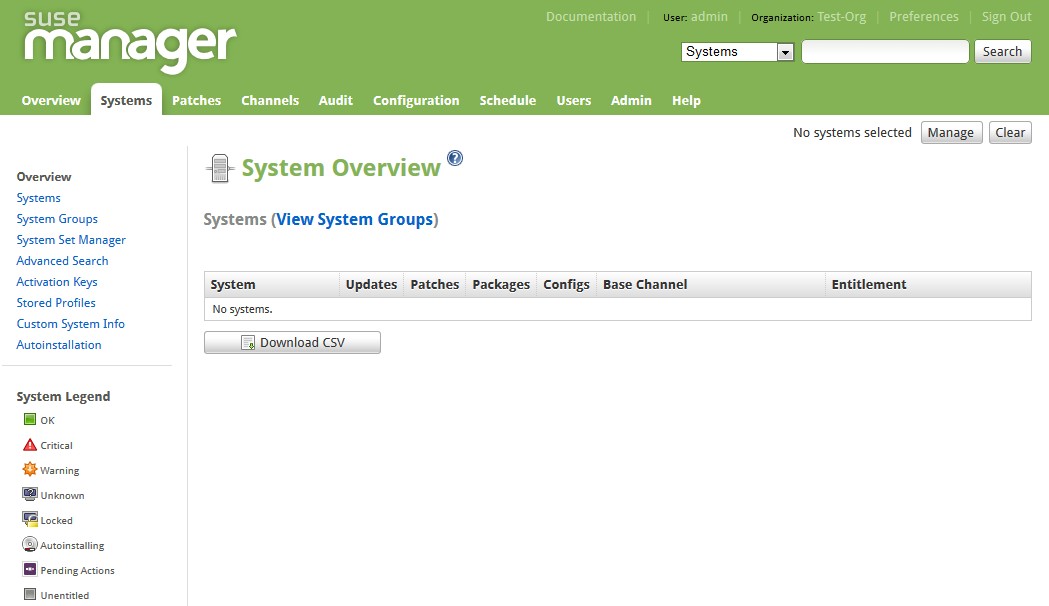Differences between Spacewalk, Red Hat Network Satellite and SUSE Manager
Red Hat Network Satellite and SUSE Manager are two management suites for the Linux enterprise distros Red Hat Enterprise Linux and SUSE Linux Enterprise Server.
At first sight these products look very similar to each other and there are also technical analogies because the products are based on the same core code: Spacewalk. Spacewalk was released as open source by Red Hat in 2008 - it is also the base platform for the commercial Satellite server.
So, what's the difference between these products? The following table shows the commonalities and differences:
| Spacewalk | RHN Satellite | SUSE Manager | |
| Version | 2.1 | 5.6 | 1.7 |
| Link | [click me!] | [click me!] | [click me!] |
| Pricing | free | Subscription/module | |
| Management of | Fedora, CentOS, SUSE, Debian, Solaris | RHEL, Solaris | SUSE, RHEL* (see below) |
| Architectures | i386, x86_64 | i386, x86_64, s390x | i386, x86_64, ia64, s390x, ppc, ppc64 |
| Database | Postgres, Oracle | Oracle 10gR2/11g | Postgres, Oracle 10gR2/11g |
| Functions (shortened) |
| ||
Central management of RHEL and SLES systems with one suite?
What are the possibilities if RHEL and SLES systems shall be operated parallel and managed centrally?
That is something I was thinking about, too and so I was researching in the internet and socialized with SUSE on Twitter.
Basically, there are two possibilities - find out for yourself if those are good solutions for you.
1.Possibility - SUSE Expanded Support

Beside SLES patches SUSE also provides fixes for RHEL within the "SUSE Expanded Support". This was designed for long migrations and should make the Red Hat support becoming obsolete because patches aren't received directly through Red Hat Network afterwards. Finally, the software packages quality should be the same because the packages are based on the same source code - but I'd prefer to receive distro patches from the original distributor.
If you're not planning a migration and just want to combine the best from both "worlds" this might not be the best solution for you.
2.Possibility - mrepo

Another possibility would be using a tool called mrepo. This tool creates mirrors of YUM repositories and serves these RPM packages locally - the website says that this is working with RHN channels, too. It seems hard to believe that this is possible without breaking any license terms because downloading RPMs from RHN is knowingly complicated. This feature should only be possible using the RHN Satrellite server.
This might be a possible solution for testing purposes - but for productive environments where reproachless support is indispensable I'd advise against this solution.
Conclusion
Finally, the products RHN Satellite and SUSE Manager are quite similar (quasi "the same in green" 😛) - unfortunately combing both "worlds" isn't that easy.
This problem is not a technical but rather legal licensing issue like a SUSE employee told me recently. The reasons are understandably comprehensible - the manufacturers wan't to sell their own product to stay competitive.
In my opinion you'll have to migrate the other system landscape or use more money to implement both management tools parallel if you use both products and want a central management suite. An alternative would be using a trick to cache the RPM packages from Red Hat Network and share them. If it is not important for you where your systems patches come from you could also have a look at "SUSE Expanded Support".
For me it is absolutely important to have reproachless support from the original distributor. In all cases I'd prefer to implement both mangement products.
Gallery
Attached some screenshots of the mangement suites.


